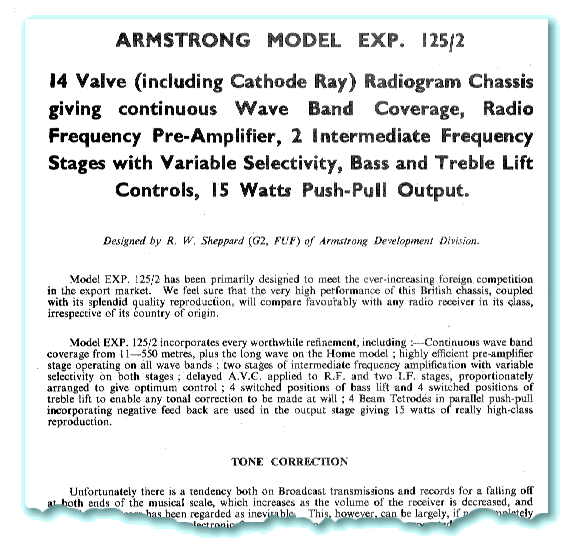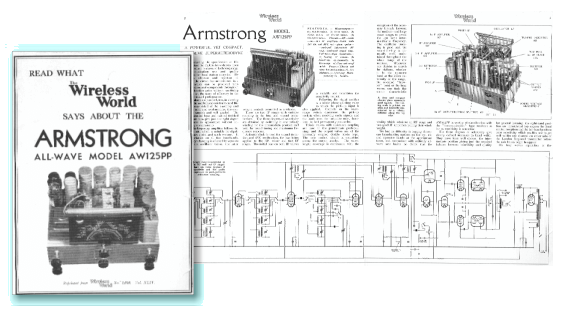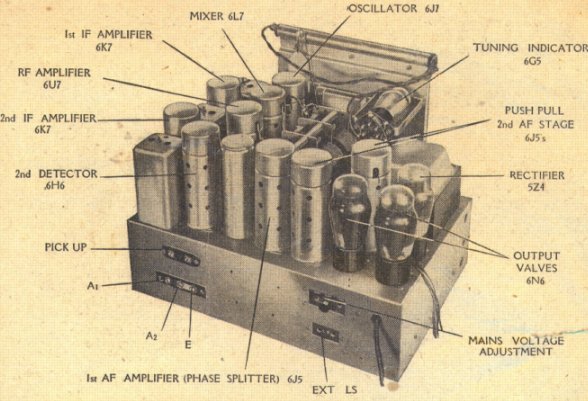Armstrong Publicity Material - Early Examples

The earliest publicity leaflets for Armstrong items tended to be single foolscap-sized sheets, printed in black and white. These would sometimes be collected and stapled together with a cover, but were generally available in loose-leaf form. As sets became more sophisticated, more than one sheet was included to cover all the features of each unit. The sheets also often included some monochrome photographs of the units. A particularly nice example is shown to the right. This was the first of a set of four sides of foolscap on the EXP125/2 tuner and amplifier, produced in 1948.
The EXP125/2 was in two units. One unit was the multi-band tuner and preamplifier section. This is shown in lower photograph. The other unit was the power amplifier section, shown in the upper photo.
A typical collection of leaflets would in those days have covered perhaps half a dozen differing Armstrong units. For example, the EXP125/2 leaflet used as an example here was stapled into a cover with similar sets of sheets for the RF103/3, EXP83/3, and EXP119 radiogram/radio chassis.
The sheets normally listed the full complement of valves, and gave various technical details of the unit.
The above is just the top part of the second sheet on the EXP125/2 and shows the fairly basic and straightforward presentation of the information. From a historical point of view, one interesting detail of this sheet is that it identifies Ron Sheppard as the designer of the EXP125/2. Although he became known in later years as the person who dealt with technical queries, Ron actually did a fair amount of electronic design work for Armstrong in the 1940's. He was also a radio amateur (call sign G2FUF) as is Ted Rule who did later design work.
Although the early information leaflets were generally of the types described above, there were some interesting exceptions.
For example, the above image shows a leaflet that reprints a review of the AW125PP that was originally published in the January 5th 1939 issue of Wireless World. This demonstrates that even 60 years ago, manufacturers like Armstrong would use leaflets that reprinted favourable reviews for publicity purposes. In this case the review was reprinted essentially exactly as it first appeared, but with the addition of a cover (shown on the left, above the main reprinted pages).
The above image shows a larger copy of one of the illustrations from the original Wireless World review from which you can see the kinds of details that were given. As indicated on the cover of the leaflet, the ‘AW’ indicated that this was an ‘All Wave’ set - i.e. that it was able to receive radio signals on all the long, medium, and short wavebands then in use for commercial broadcasting. In those pre-VHF days it was common for radio enthusiasts to listen in to distant stations from a variety of countries, so good short-wave performance and long-wave performance were judged to be very important.

Content and pages maintained by: Jim Lesurf
using HTMLEdit and TechWriter on a StrongARM powered RISCOS machine.




